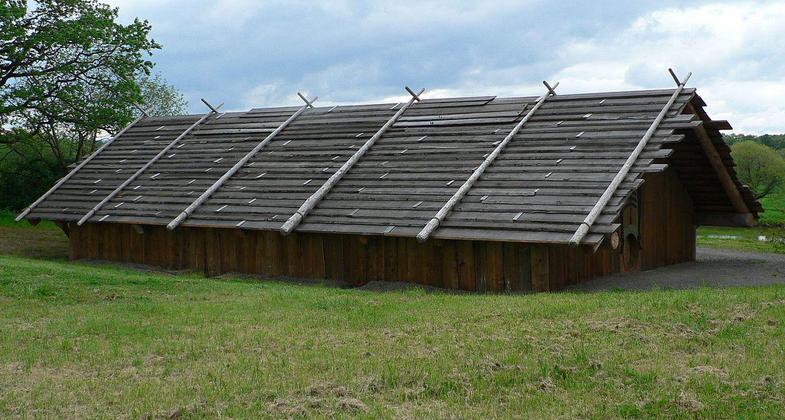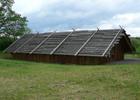Oaks to Wetlands Trail
check with the trail manager for updated details before visiting.
Oaks to Wetlands Trail
U.S. Fish and Wildlife Service
- Length
2 miles
- Elevation Gain
--
- Route Type
Loop
- Length
2 miles - Elevation Gain
-- - Route Type
Loop
Visitors enjoy bird watching and special features seen by Lewis and Clark during their expedition, including Carty Lake, Lake River, Wapato portage, a basalt outcropping historic mining site, and a replica cedar plank house. Habitat types include wetlands, riparian, and oak and fir forests.

Cathlapotle Plankhouse (a 2005 full-scale replica of a Chinookan-style cedar plankhouse). Photo by Walter Siegmund.

Thimbleberry on the Oaks to Wetlands Trail. Photo by Walter Siegmund.

Oaks to Wetlands Trail, west shore of Boot Lake, Carty Unit, Ridgefield National Wildlife Refuge. Photo by Walter Siegmund.

Rough-legged Hawk. Photo by Walter Siegmund.

Rest Lake with Bufflehead; seasonal wetlands and grasslands; bird-watching blind. Photo by Walter Siegmund.
Location: Ridgefield National Wildlife Refuge, Carty Unit, near Ridgefield, WA
- States: Washington
- Counties: Clark
Visitors to the refuge can enjoy viewing a wide variety of wildlife within a short drive north of the Portland/Vancouver metropolitan area. This trail provides an opportunity to experience a spectacular natural area that is on the Lewis and Clark National Historic Trail. Explorers Lewis and Clark visited the village of Cathlapotle and counted 14 cedar houses and 900 inhabitants. This village site is protected as an archaeological site on the refuge and has been recognized nationally with the first National Historic Preservation award.
The rich cultural and natural history of the refuge that the famed explorers experienced is still evident along the trail. Special features visible on the trail are Carty Lake, Lake River, Wapato portage, a basalt outcropping historic mining site, and a replica cedar plank house.
Habitat types include wetlands, riparian, and oak and fir forest types. Each fall the Refuge comes alive with thousands of ducks, geese, swans, and migrating songbirds. The Oaks to Wetlands Trail offers a place for people to keep in touch with their wild neighbors, and to appreciate the beauty and splendor of the types of natural areas that once occurred in abundance along the lower Columbia River.
Accessibility Information
No text provided.
Allowed Uses:
Hiking/WalkingOther Activities
- Fishing
- Wildlife viewing / observation
Public Contact
Eric AndersonUSFWS
28908 NW Main Ave.
Ridgefield, WA 98642
[email protected] • (360) 887-4106
www.fws.gov/refuge/Ridgefield
Contact the trail manager for current maps and visiting details.
More Details
- Elevation (low): 5
- Elevation (high): 35
- Elevation (cumulative): --
- Part of a Trail System? No
- Surface (primary): Rock, crushed
- Surfaces (additional): --
- Tread Width (average): 20"
- Tread Width (minimum): --
- Running length (minimum): --
- Tread Grade (average, percent): 5
- Tread Grade (maximum): 12
- Running length (maximum): --
- Cross-slope (average, percent): --
- Cross-slope (maximum): --
- Running length (maximum): --
- Certified as an NRT
Jun 3, 2005

